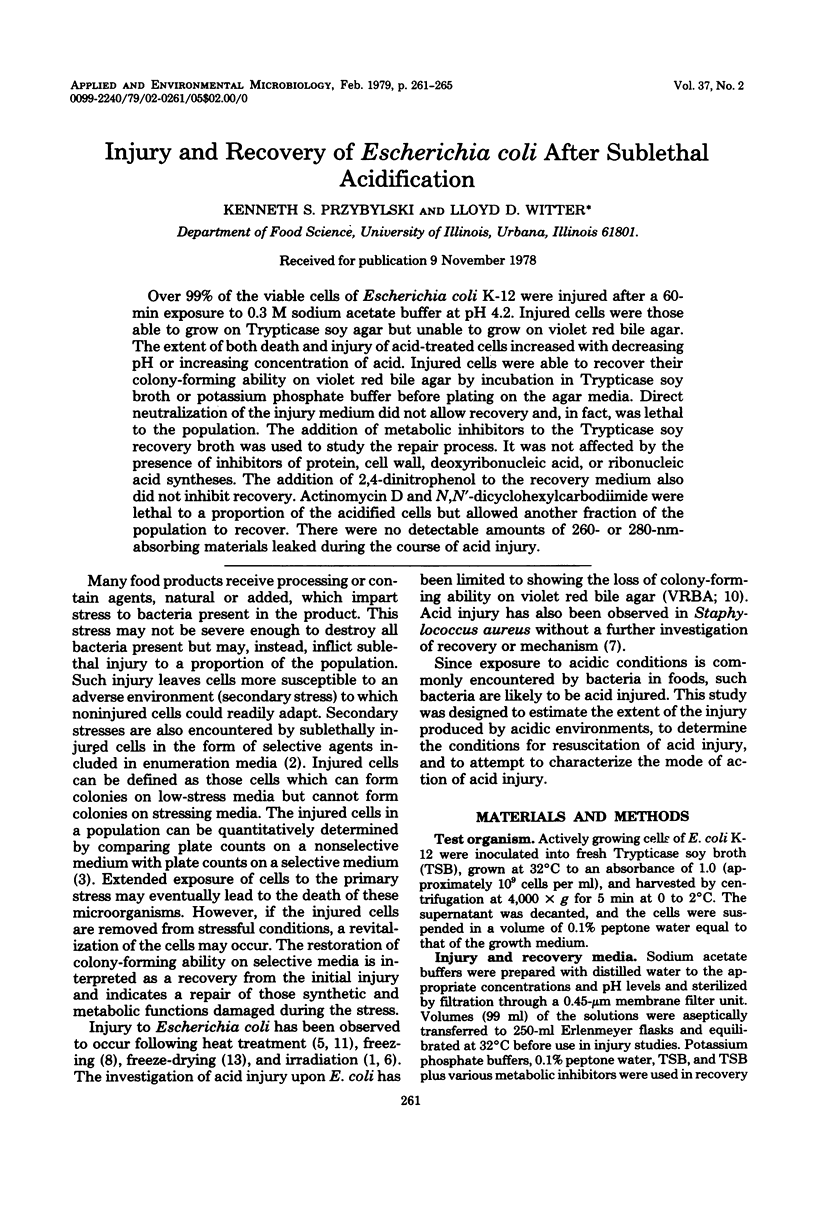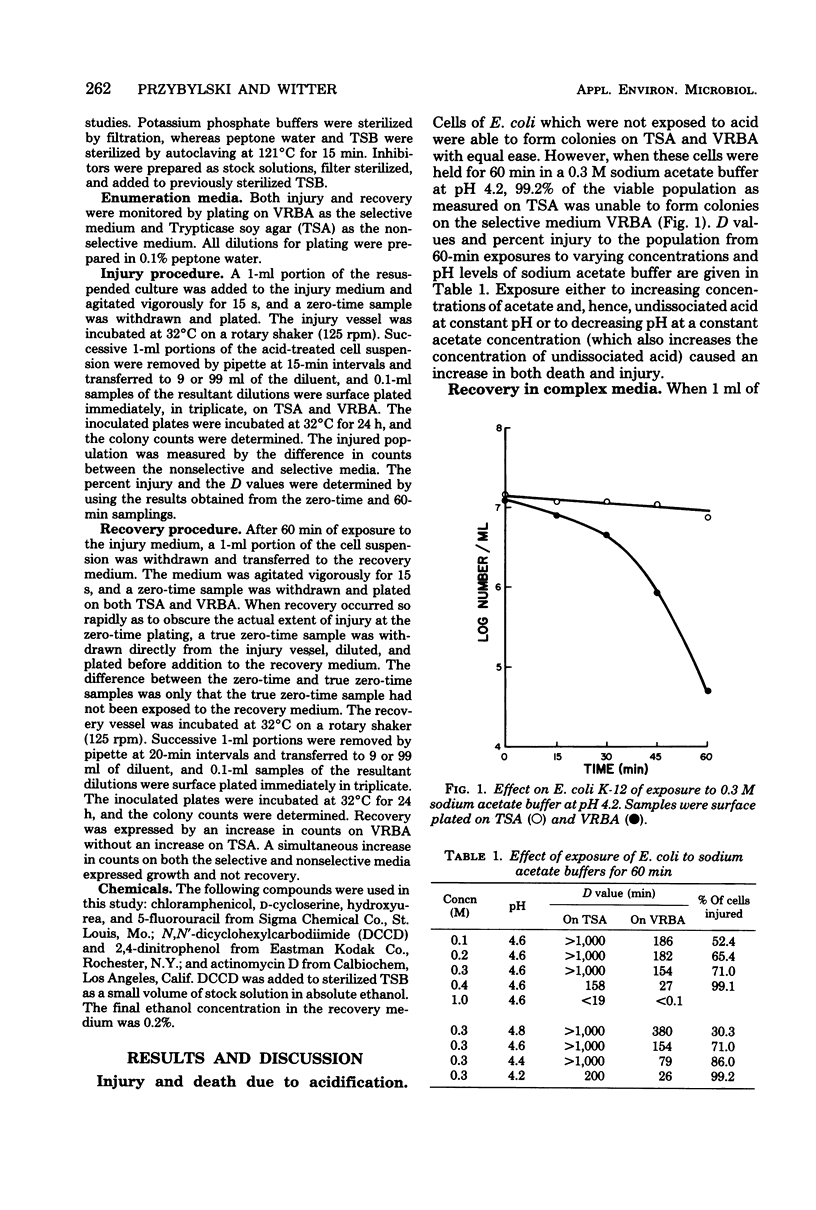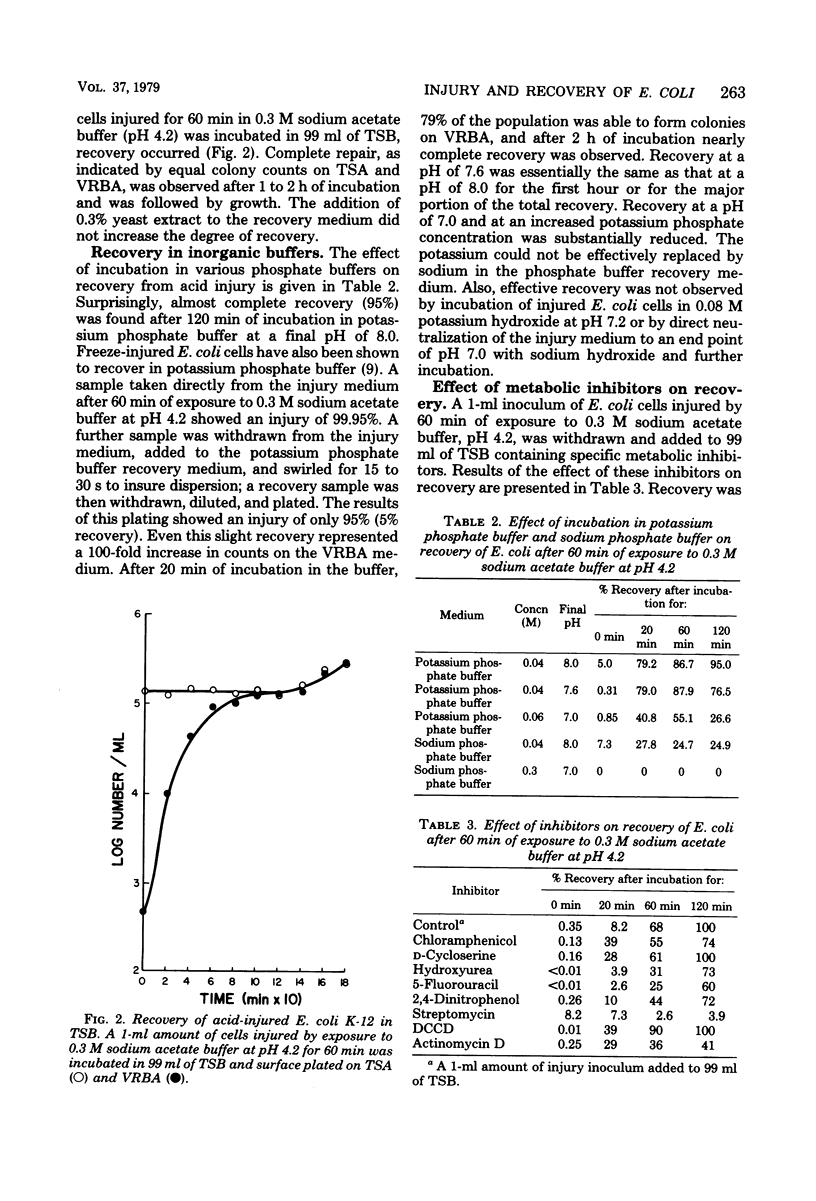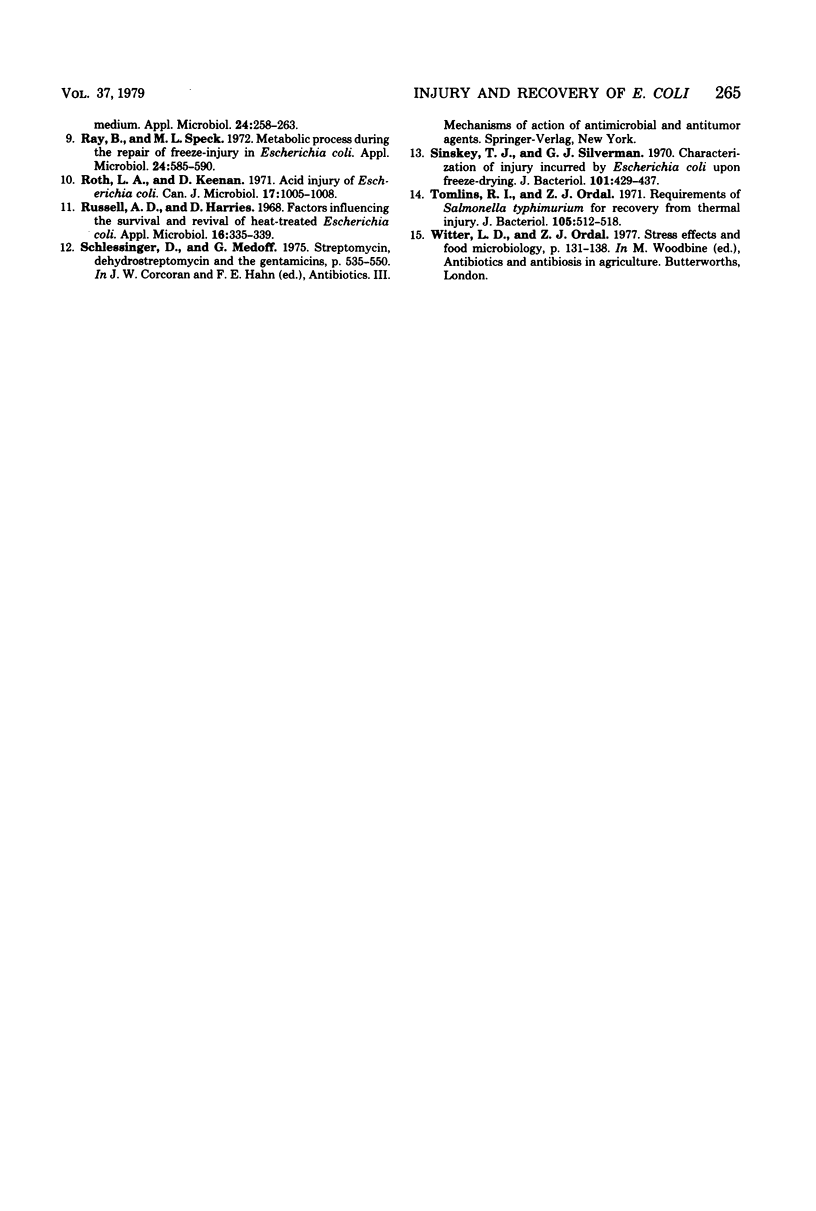Abstract
Over 99% of the viable cells of Escherichia coli K-12 were injured after a 60-min exposure to 0.3 M sodium acetate buffer at pH 4.2. Injured cells were those able to grow on Trypticase soy agar but unable to grow on violet red bile agar. The extent of both death and injury of acid-treated cells increased with decreasing pH or increasing concentration of acid. Injured cells were able to recover their colony-forming ability on violet red bile agar by incubation in Trypticase soy broth or potassium phosphate buffer before plating on the agar media. Direct neutralization of the injury medium did not allow recovery and, in fact, was lethal to the population. The addition of metabolic inhibitors to the Trypticase soy recovery broth was used to study the repair process. It was not affected by the presence of inhibitors of protein, cell wall, deoxyribonucleic acid, or ribonucleic acid syntheses. The addition of 2,4-dinitrophenol to the recovery medium also did not inhibit recovery. Actinomycin D and N,N'-dicyclohexylcarbodiimide were lethal to a proportion of the acidified cells but allowed another fraction of the population to recover. There were no detectable amounts of 260- or 280-nm-absorbing materials leaked during the course of acid injury.
Full text
PDF




Selected References
These references are in PubMed. This may not be the complete list of references from this article.
- Adler H. I., Fisher W. D., Hardigree A. A., Stapleton G. E. Repair of radiation-induced damage to the cell division mechanism of Escherichia coli. J Bacteriol. 1966 Feb;91(2):737–742. doi: 10.1128/jb.91.2.737-742.1966. [DOI] [PMC free article] [PubMed] [Google Scholar]
- BUSTA F. F., JEZESKI J. J. EFFECT OF SODIUM CHLORIDE CONCENTRATION IN AN AGAR MEDIUM ON GROWTH OF HEAT-SHOCKED STAPHYLOCOCCUS AUREUS. Appl Microbiol. 1963 Sep;11:404–407. doi: 10.1128/am.11.5.404-407.1963. [DOI] [PMC free article] [PubMed] [Google Scholar]
- Clark C. W., Ordal Z. J. Thermal injury and recovery of Salmonella typhimurium and its effect on enumeration procedures. Appl Microbiol. 1969 Sep;18(3):332–336. doi: 10.1128/am.18.3.332-336.1969. [DOI] [PMC free article] [PubMed] [Google Scholar]
- Harold F. M., Baarda J. R., Baron C., Abrams A. Inhibition of membrane-bound adenosine triphosphatase and of cation transport in Streptococcus faecalis by N,N'-dicyclohexylcarbodiimide. J Biol Chem. 1969 May 10;244(9):2261–2268. [PubMed] [Google Scholar]
- Ray B., Speck M. L. Metabolic process during the repair of freeze-injury in Escherichia coli. Appl Microbiol. 1972 Oct;24(4):585–590. doi: 10.1128/am.24.4.585-590.1972. [DOI] [PMC free article] [PubMed] [Google Scholar]
- Ray B., Speck M. L. Repair of injury induced by freezing Escherichia coli as influenced by recovery medium. Appl Microbiol. 1972 Aug;24(2):258–263. doi: 10.1128/am.24.2.258-263.1972. [DOI] [PMC free article] [PubMed] [Google Scholar]
- Roth L. A., Keenan D. Acid injury of Escherichia coli. Can J Microbiol. 1971 Aug;17(8):1005–1008. doi: 10.1139/m71-160. [DOI] [PubMed] [Google Scholar]
- Russell A. D., Harries D. Factors influencing the survival and revival of heat-treated Escherichia coli. Appl Microbiol. 1968 Feb;16(2):335–339. doi: 10.1128/am.16.2.335-339.1968. [DOI] [PMC free article] [PubMed] [Google Scholar]
- Sinskey T. J., Silverman G. J. Characterization of injury incurred by Escherichia coli upon freeze-drying. J Bacteriol. 1970 Feb;101(2):429–437. doi: 10.1128/jb.101.2.429-437.1970. [DOI] [PMC free article] [PubMed] [Google Scholar]
- Tomlins R. I., Ordal Z. J. Requirements of Salmonella typhimurium for recovery from thermal injury. J Bacteriol. 1971 Feb;105(2):512–518. doi: 10.1128/jb.105.2.512-518.1971. [DOI] [PMC free article] [PubMed] [Google Scholar]


